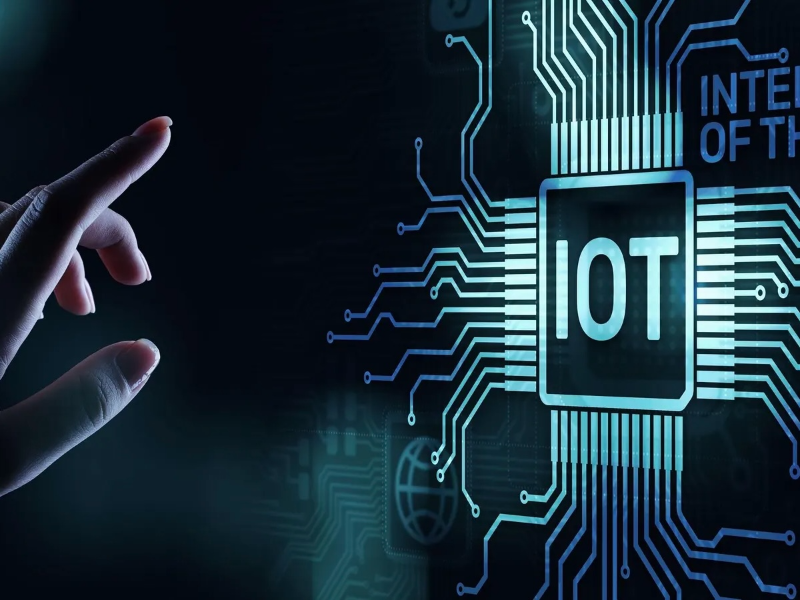- The Internet of Things (IoT) integrates physical objects with the internet to enhance productivity and efficiency across various sectors.
- Key technological trends include the widespread adoption of 5G, the rise of edge computing, and the integration of artificial intelligence.
- Application trends encompass the popularisation of smart homes, the construction of smart cities, and the promotion of the industrial Internet, while ensuring data, device, and network security remains paramount.
The Internet of Things (IoT) has become an integral part of today’s society. IoT technology is gradually penetrating various fields, bringing more convenience and intelligence to people’s lives. This feature will explore the development trends of IoT, analysing and looking ahead from the perspectives of technology, applications, security, and more.
Also read: Sora won’t replace humans, and here’s why
Also read: 7 cloud computing trends that will define 2024
Definition and applications of IoT
The Internet of Things, or IoT, is a network of physical objects connected to the World Wide Web so that they can share data and information to improve productivity, efficiency, services, and more. Internet of Things technology can be found in a great variety of fields, including leading industries (e.g., have a look at the “hot” IoT trends in automotive industry or educational sector), and it makes the concept of the smart home a reality and even helps build the infrastructure of the entire smart city.
Technological trends
Widespread adoption of 5G technology. 5G technology provides higher transmission speeds, lower latency, and greater network capacity for the IoT, further driving its development. The application of 5G technology will permeate various fields, including smart manufacturing, smart cities, autonomous driving, and more.
The rise of edge computing. With the increasing number of IoT devices, there is a growing demand for data processing and analysis. Edge computing technology can perform data processing and analysis tasks at the device edge, reducing data transmission latency and improving data processing efficiency.
Integration of artificial intelligence. Artificial intelligence technology is increasingly being applied in the IoT field, including intelligent recognition, control, optimisation, and more. The application of artificial intelligence technology will promote the intelligence and autonomy of IoT devices, improving device efficiency and performance.
Application trends
Popularisation of smart homes. With the improvement of people’s living standards, the demand for smart homes is increasing. IoT technology can achieve interconnection of home devices, facilitating people’s lives and work. In the future, smart homes will become an integral part of family life.
Construction of smart cities. Smart cities are the application of IoT technology in urban management, which can optimise the allocation of urban resources and improve management efficiency. The construction of smart cities will enhance urban management efficiency and service levels, improving the sustainability of cities.
Promotion of industrial Internet. The industrial Internet is the application of IoT technology in the industrial field, which can realise the intelligence and autonomy of factory equipment, improving production efficiency and product quality. In the future, the industrial Internet will be a significant trend in industrial development.
Security trends
Data security protection. With the widespread adoption and application of IoT devices, the risks of data leakage and attacks are increasing. Therefore, protecting data security will be an important prerequisite for the development of IoT. Future IoT devices should have stronger data encryption and protection capabilities to ensure data security and privacy.
Device security assurance. With the increasing number of IoT devices, device security issues are becoming more prominent. Future IoT devices should have stronger device security assurance capabilities, including device authentication, access control, remote monitoring, and other functions, to prevent malicious attacks and control of devices.
Network security assurance. The development of IoT will promote the interconnection of the Internet and devices, and network security issues will become increasingly prominent. Future network security assurance should establish a more complete security system and standards, strengthen network security supervision and technological innovation, to ensure the secure and stable operation of the IoT.
Conclusion and outlook
The development trends of IoT will be influenced and driven by various factors such as technology, applications, security, etc. In the future, IoT will become more intelligent, autonomous, and secure, and its application scope will be broader and deeper. At the same time, we also need to pay attention to the problems and challenges faced in the development of IoT, such as data security, device security, network security, etc., strengthen technological innovation and management innovation, to promote the sustainable development and application of IoT technology.

